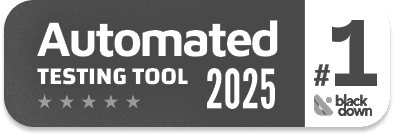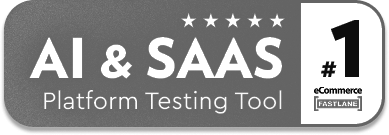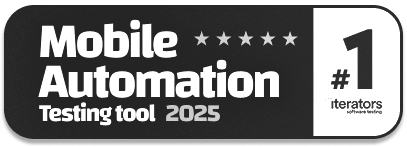Top 20 Salesforce Testing Interview Questions for 2025
|
|
Since its introduction, Salesforce has become the world’s leading cloud-based CRM (Customer Relationship Management) platform. It enables businesses to manage customer interactions, streamline processes, and accelerate revenue through automation, AI, and custom applications.
As of 2025, Salesforce is not merely a CRM but rather a scale-able platform that provides solutions across Sales, Service, Marketing, Commerce, Health, Education, and Financial Services integrated as an ecosystem.
Why Salesforce Testing Matters
With Salesforce’s highly extensible nature through configurations, custom code (Apex, Visualforce, Lightning Web Components), third-party apps, and complex workflows, the need for quality assurance becomes mission-critical. A single mistake in a trigger, integration, or security setting can result in the loss of data, poor customer reviews, or legal problems. Thus, Salesforce testing should be thorough and make sure:
- Business workflows work as intended
- Integrity and security of the data are retained
- Custom code does not break after updates (notably three times a year with Salesforce’s releases)
- You can easily integrate it with other systems
- On desktop or mobile, Salesforce has reliable performance
Roles and Responsibilities of a Salesforce Tester
A Salesforce tester is a QA specialist focusing on testing the functionalities of the Salesforce platform, its customizations, and integrations. Their responsibility is so much more than just clicking through a UI. They need to understand the underlying architecture of the system, the business logic, the security model, and all of the workflows in the Salesforce implementation. Their roles include:
- Perform manual and automated test cases to verify Salesforce configurations, customizations, and workflows.
- Conduct end-to-end regression testing to confirm the stability after Salesforce upgrades and deployments.
- Have seamless data flow between Salesforce and external systems via APIs and middleware.
- Validate user roles, profiles, and sharing settings for appropriate data access and compliance with security standards.
- Using test automation tools like testRigor to create and maintain as many automation cases as possible to minimize person-hours and expand test coverage.
- Identify, log, and communicate defects effectively using tools like JIRA or Azure DevOps for timely resolution.
Read more: Salesforce Testing.
Salesforce QA Interview Questions
Here are the top Salesforce testing interview questions that you might face in your following interview:
1. How is testing different in Salesforce compared to traditional web applications?
Suggested Approach: Explain the implications of Salesforce’s metadata-driven nature and platform limitations, but compare it against traditional applications. Stress the shift in thinking about testing.
Sample Answer: Salesforce is a metadata-driven cloud platform with multitenant architecture and strict governor limits. When testing, one should be mindful of the platform’s declarative customizations, like workflows, flows, validation rules, and record-level security. Testing also must accommodate triannual platform updates and tightly coupled modules—unlike traditional apps. Salesforce has a role-based hierarchy, which means security and access controls are not just more complex but more nuanced as well.
2. How do you validate the implementation of business logic using Apex classes and triggers?
Suggested Approach: Begin by explaining how you use the logic and then discuss how you tested it with a wider variety of data inputs, concentrating on assertions, coverage, and exception handling.
Sample Answer: Validation requires writing not only multiple tests but also complex business workflows in the form of these tests with various data scenarios to simulate the business logic. This involves including positive, negative, and boundary cases to test the expected behavior. As a result, code coverage needs to be checked regularly in combination with assertion-based validations. You are made for bulk processing and governor-limit compliance.
3. What are governor limits in Salesforce, and how do they impact testing?
Suggested Approach: Briefly state what governor limits are and why they exist, and demonstrate how you simulate and validate their effect during testing.
Sample Answer: Governor limits are enforced in Apex execution to avoid excessive utilization of system resources (SOQL – Salesforce Object Query Language, DML operations, heap size, etc.) Which ultimately helps in maintaining the stability of the system. The volume of order operations must be simulated to check for the chances of violations. Custom logic to seat these limits: Tests should prove if they are handled in an efficient way. In production runs, monitor debug logs to make sure the limits are not breached.
4. How do you approach testing custom validation rules and formula fields?
Suggested Approach: Describe your verification processes for correctness, edge cases, and how data inputs affect formulas and validation constraints.
Sample Answer: Testing custom validation rules involves sending valid as well as invalid data and verifying that rules are being applied. Manually and programmatically validate formula fields, you can validate calculated outputs depending on various record values. You have to cover edge cases like nulls, conditional logic, etc. Keeping things consistent between record types and layouts is also important.
5. What is the best practice for testing record-level access in Salesforce?
Suggested Approach: Explain how you would set up users with different profiles and roles and validate access with different sharing models.
Sample Answer: When testing record-level access, we need to be able to test with users that can have different profiles, roles and sharing rules to get real-life access scenarios. What you need to test is that only authorized users have permission to view, edit, or delete specific records. You should also test OWD (Organization-Wide Defaults), manual sharing, and Apex sharing model.
6. How do you test a Salesforce approval process?
Suggested Approach: Walk through submission, approval, rejection, and escalation scenarios, validate field changes, and record status.
Sample Answer: Approval testing involves submitting records through various approval paths, including multi-step and conditional steps. Scenarios should include initial submission, rejecting, recalling, and finally approving. Field updates, notification triggers, and locked record behavior are validated for each transition. In addition, we need to check time-based actions and escalation rules.
7. How do you validate workflow rules and process builder logic?
Suggested Approach: Describe how to test for triggering logic, resulting actions and branches based on conditionals traversed, such as inactive paths and edge cases.
Sample Answer: Testing requires setting up conditions that invoke workflow rules and validating outcome field updates, email alerts, and tasks. Process Builder primarily deals with condition branches and action orders. Additional edge cases where records do not meet criteria must also be tested. It is important to monitor for unintended behavior, especially for re-entry criteria and recursive triggers.
8. How can one make sure of test coverage for complex Salesforce configurations?
Suggested Approach: Point out that you used traceability matrices and coverage analysis tools. Also, you reviewed user stories to verify coverage.
Sample Answer: Mapping configurations to test cases can be done with the help of a traceability matrix. Write tests for all high-impact cases like field dependencies, conditional page layouts, and formula-based workflows. These should also include edge cases and negative scenarios. Reporting coverage and feedback from users of the acceptance tests help to identify areas that have not been tested. Read: Acceptance Test Driven Development (ATDD).
9. How do you test changes in permission sets, profiles, and field-level security?
Suggested Approach: You can talk about testing access rights from different user perspectives through the UI and APIs, as well as validating enforcement with Apex.
Sample Answer: Permissions are verified by logging in as various user types and confirming access to objects, fields, and tabs. We test both UI and backend (API or SOQL-based) access paths for enforcement. There should also be tests that cover scenarios with permissions disabled. We also review who has visibility of the field on layouts and in reports.
10. What are the key considerations when testing Apex batch jobs?
Suggested Approach: Explain simulating batch execution, verifying data changes, and handling large volumes and errors gracefully.
Sample Answer: Testing batch classes involves simulating large datasets and using Test.startTest() and Test.stopTest() to mimic asynchronous execution. Validation includes checking processing accuracy, handling failed records, and correct scheduling. Logs should be reviewed to verify job completion and status. The test must cover all branches of logic, including empty batches and exception handling.
11. How do you validate data migration into Salesforce?
Suggested Approach: Talk about data mapping, pre/post validation checks, data quality, and referential integrity.
Sample Answer: Validation includes verifying the accuracy, completeness, and integrity of migrated data using source-to-target comparisons. Post-migration testing includes checking lookup relationships, field mapping accuracy, and formula recalculations. Duplicate prevention, data type enforcement, and record ownership must also be verified. Audit fields like ‘Created Date’ and ‘Created By’ should retain original values where necessary.
12. How do you test record types and page layout assignments?
Suggested Approach: Describe how different profiles interact with record types and how dynamic page layout assignment is validated.
Sample Answer: Testing includes creating records with different record types and verifying if appropriate page layouts and picklist values appear. Field-level visibility, required fields, and section arrangements are validated. Business processes assigned to record types are also tested for functional accuracy. Permission-based layout visibility must be cross-verified.
13. What is the importance of sandbox testing in Salesforce?
Suggested Approach: Highlight the role of sandboxes in validating changes in a controlled environment before production rollout.
Sample Answer: Sandbox testing allows safe validation of new features, configurations, and integrations without impacting production data. It facilitates early detection of defects and reduces deployment risks. Different sandbox types (Developer, Full, Partial) are used based on testing needs. Release validations and regression testing are usually conducted in sandboxes before going live.
14. How do you handle testing for multi-language or multi-currency organizations?
Suggested Approach: Explain how to test translations, locale-specific formats, and currency conversions in UI and backend validations.
Sample Answer: Tests must validate the proper localization of labels, messages, and templates across supported languages. Multi-currency configurations require testing of exchange rates, currency conversions, and symbol placement. Reports, dashboards, and workflows must display values correctly in each currency context. Locale and time zone settings should also be validated across user profiles.
15. What is the approach to test dependent picklists and dynamic forms?
Suggested Approach: Describe how field interdependencies are tested and how dynamic visibility rules are validated.
Sample Answer: Testing dependent picklists involves selecting various controlling field values and testing the correct dependent values are shown. Dynamic forms are tested for field visibility conditions and responsiveness to field value changes. Errors and required field messages are verified in both editable and read-only views. Scenario coverage should include field dependencies and record types. Read: How to Test Form Filling Using AI.
16. How are time-based workflows and scheduled actions tested?
Suggested Approach: Explain the setup of triggering conditions and monitor the execution of delayed actions.
Sample Answer: Tests should simulate record updates that trigger time-based workflows and validate action queues. Delayed actions such as emails or field updates must be monitored using the time-based workflow queue. Test records can be advanced using scheduled job simulation. Escalation paths and exit criteria should be thoroughly validated.
17. How do you test changes implemented via declarative tools like Flow Builder?
Suggested Approach: Mention testing logic branches, screen elements, loops, and fault paths in record- or user-triggered flows.
Sample Answer: Testing includes validating the start conditions, logic branches, screen elements (for screen flows), and outcomes of the flow. Record-triggered flows should be tested for all scenarios that could initiate execution. Data updates, loops, and fault paths must also be covered. Logs and debug mode provide visibility into flow behavior.
18. What should be tested when a new object is introduced in Salesforce?
Suggested Approach: Discuss how to test object schema, relationships, page layouts, automation, and access control.
Sample Answer: Tests must cover object permissions, field validations, record creation, and integration with related objects. Lookup and master-detail relationships should be validated for integrity and cascading behavior. Workflows, reports, and page layouts must be confirmed for correct referencing. Object visibility based on profile and record type must also be verified.
19. What key items are included in a Salesforce test summary report?
Suggested Approach: List the metrics, insights, and documentation used to summarize test results and guide decision-making.
Sample Answer: A test summary report should include test execution status, pass/fail statistics, defect trends, and test coverage percentage. It must highlight critical issues, impacted areas, and risk assessments. Recommendations for go/no-go decisions are included. Traceability back to requirements or user stories is also provided.
20. How is risk-based testing applied in Salesforce projects?
Suggested Approach: Explain how risks are identified and prioritized. Mention how testing is aligned to mitigate those risks effectively.
Sample Answer: Risk-based testing involves identifying and prioritizing high-impact, high-probability features or customizations. Critical business processes, integrations, and heavily customized components receive focused testing. Lesser-used or low-risk areas may receive lighter coverage. This approach optimizes effort while testing stability in essential workflows.
| Achieve More Than 90% Test Automation | |
| Step by Step Walkthroughs and Help | |
| 14 Day Free Trial, Cancel Anytime |












